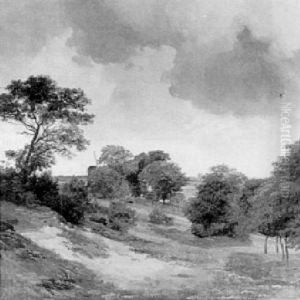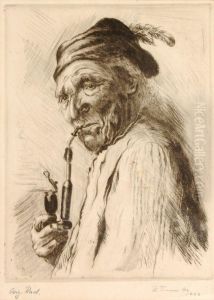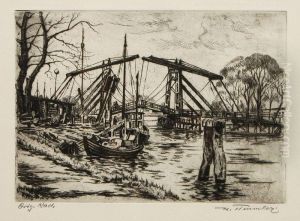Friedrich Karl Joseph Simmler Paintings
Friedrich Karl Joseph Simmler was a notable German-Polish painter, born on April 25, 1801, in Breslau, the Kingdom of Prussia (now Wrocław, Poland). His life and career spanned much of the 19th century, a period marked by significant developments in European art, including the Romantic movement and the beginnings of Realism. Simmler's work, however, was deeply rooted in the Neoclassical tradition, reflecting the prevalent styles and artistic norms of his early years.
Simmler received his initial artistic training at the Prussian Academy of Arts in Berlin, where he studied under the tutelage of renowned artists of the time. His education was typical of the period, emphasizing classical themes, meticulous technique, and a strong foundation in draughtsmanship and historical painting. This training set the stage for Simmler's career, which was characterized by a focus on portraiture and historical subjects. His style was distinguished by its precision, attention to detail, and a keen sense of composition, which garnered him considerable acclaim.
Throughout his career, Simmler enjoyed the patronage of various European aristocracies, which was a testament to the quality and appeal of his work. He painted portraits of notable figures of his time, contributing significantly to the visual documentation of European society's elite in the 19th century. Beyond portraiture, Simmler's historical paintings, which often depicted scenes from classical antiquity and the Renaissance, were praised for their vivid storytelling and adherence to the ideals of Neoclassicism.
Simmler's contributions to art were recognized in his time, and he became a respected figure in the artistic communities of Prussia and Poland. Despite the shifting artistic trends of the 19th century, he remained faithful to the Neoclassical style, showcasing the enduring appeal of classical themes and techniques. Friedrich Karl Joseph Simmler passed away on October 2, 1872, in Frankfurt am Main, Germany, leaving behind a legacy that highlighted the elegance and precision of Neoclassical painting. His works continue to be appreciated for their historical value and artistic merit, offering insights into the European cultural and social landscape of his era.
































